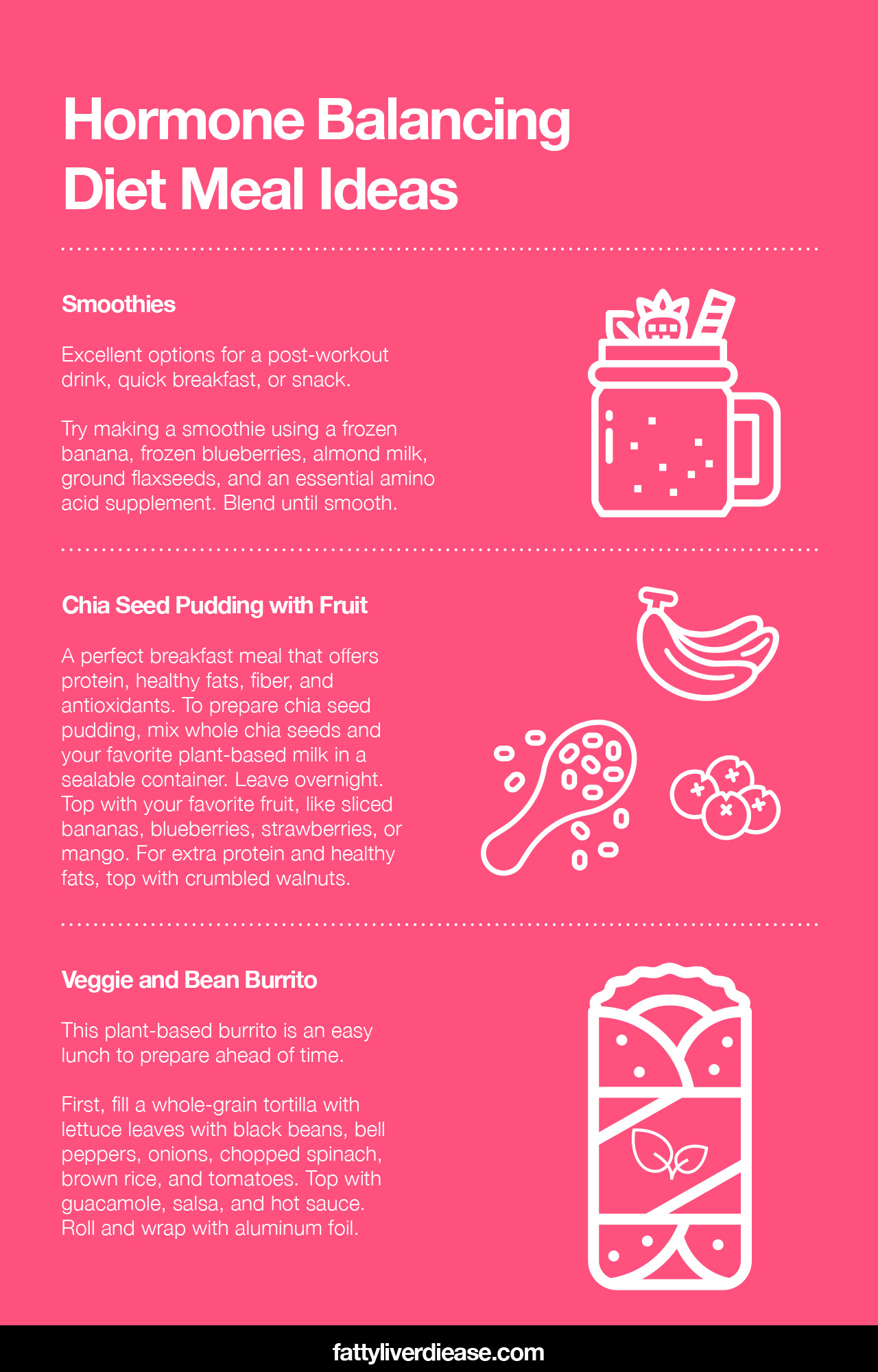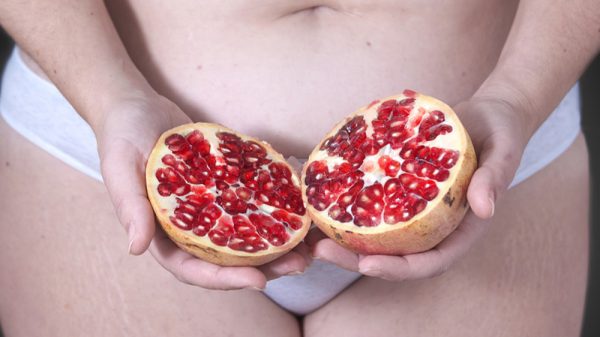When hormones get out of whack, they can wreak havoc on our overall health. Polycystic ovary syndrome (PCOS) is a condition that affects women during reproductive years and causes imbalances in hormone levels. Luckily, there are strategies to support hormone balance and to improve PCOS symptoms.
If you’re wondering how to balance hormones, then you’ve come to the right place. Following the hormone balancing diet for PCOS is one of the best strategies for managing symptoms and improving hormonal health.
What to Know About PCOS
PCOS is a common condition that affects millions of American women before menopause. PCOS is characterized by high levels of testosterone, which is a male hormone. Normally, women produce small amounts of testosterone that help regulate sex drive and mood. However, PCOS leads to excess androgens. Women with PCOS also have imbalanced levels of female hormones like estrogen and progesterone, as well as the stress hormone cortisol.
Women with PCOS may experience symptoms like:
- Irregular periods
- Hirsutism, or excess hair growth
- Lack of ovulation
- Infertility
PCOS is also associated with metabolic conditions such as:
- High blood sugar
- High insulin
- Insulin resistance
- Weight gain and obesity
- High triglycerides
Hormone Balancing Diet Tips
Are you wondering how to regulate hormones or how to balance your hormones? Hormone imbalance and symptoms connected to PCOS are highly responsive to diet changes. Here are some of the significant diet changes you can make to restore hormone balance and manage PCOS symptoms.
1. Get Plenty of Healthy Fats
Healthy fats are an important component of the hormone balancing diet. Omega-3 fatty acids are powerful anti-inflammatory agents that help balance hormones while also improving hormonal function and lowering systemic inflammation. You can obtain omega-3 fatty acids from both plant and animal sources. Plant foods like flaxseeds, chia seeds, and walnuts contain omega-3 fatty acids in the form of alpha-linolenic acid (ALA). Oily fish like salmon and sardines contain omega 3 fatty acids in the form of eicosapentaenoic acid (EPA) and docosahexaenoic acid (DHA).
2. Choose Whole Grains Instead of Refined Grains
Whole grains are packed with nutrients like fiber, vitamins, and minerals that fight against hormone imbalance. Dietary fiber helps keep blood sugar levels stable by preventing the rapid absorption of glucose into the bloodstream. Fiber also encourages the growth of healthy bacteria in the gut that release anti-inflammatory compounds.
Whole grains are also good sources of micronutrients like B vitamins and magnesium. B vitamins are particularly helpful in regulating metabolic function because they are utilized by all tissues as cofactors for cellular processes. Ensuring that you have sufficient levels of B vitamins helps your body convert food into energy more efficiently. Magnesium supports healthy insulin levels and blood pressure levels. The beneficial effects of B vitamins and magnesium also extend to the endocrine system.
3. Eat Plenty of Protein
Getting plenty of protein is crucial for protecting hormonal health and fighting PCOS. Protein consists of amino acids that are necessary to produce hormones, muscle tissue, connective tissue, and enzymes. It’s particularly important to get balanced ratios of essential amino acids from protein on a daily basis. Essential amino acids must be obtained from nutritional sources since they cannot be synthesized by the body. Getting balanced ratios of essential amino acids supports optimal hormonal and metabolic function.
Moreover, getting plenty of protein keeps blood sugar levels stable by slowly releasing energy into the blood. Including protein with every meal and snack helps you feel fuller for longer, reducing cravings and curbing your appetite.
4. Drink Green Tea
Green tea contains polyphenols that are potent antioxidants in the body. Green tea has long been revered for its therapeutic effects on the body. Drinking green tea regularly helps reduce inflammation, encourage healthy insulin function, and fight against fatty liver disease. Green tea consumption may also help improve hormonal function and PCOS symptoms.
Try including a cup of green tea in the morning or early afternoon. Because green tea contains caffeine, it’s better to consume it earlier in the day so it doesn’t interfere with your sleep.
5. Steer Clear of Junk Foods
Eating lots of junk foods worsens hormonal imbalance and metabolic conditions. A diet high in added sugars, saturated fat, and sodium is linked to conditions like PCOS, insulin resistance, type 2 diabetes, high blood pressure, and fatty liver disease. Foods to avoid include:
- Fatty dairy products and fatty cuts of meat: Foods like butter, whole milk, cream, steak, and bacon are high in saturated fat. A high intake of saturated fat is connected to high triglyceride levels, impaired insulin function, and hormonal imbalances.
- All processed foods: Foods like chips, crackers, granola bars, and frozen premade meals are packed with unhealthy ingredients that inhibit healthy hormonal and metabolic processes.
- Added sugar and refined grains: As described above, a diet high in added sugar and refined grains is detrimental to both hormonal and metabolic health.
When you limit your consumption of foods high in saturated fat and added sugar, your body has the opportunity to repair and heal.
6. Stick to Whole Foods
Instead of junk foods that have been highly processed, pumped full of unhealthy ingredients, and packaged, choose whole foods that are unprocessed or only minimally processed. Fill your diet with foods like fresh fruits, veggies, whole grains, nuts, seeds, beans, nonfat dairy, and lean meats.
Other Tips for Balancing Hormones
In addition to diet changes, there are also lifestyle changes you can make to improve PCOS and hormonal imbalances.
Reduce Stress
Chronically high stress levels can lead to high cortisol levels, adrenal issues, thyroid issues, and hormonal imbalance. High cortisol is connected to metabolic conditions and PCOS. To help mitigate your symptoms, aim to incorporate stress-reducing techniques into your daily routine.
Yoga and meditation support stress reduction and lower cortisol levels. More high-quality sleep also improves the body’s physiological reaction to stress and lowers cortisol levels.
Exercise
Getting regular exercise is healthy for nearly all body functions, from metabolic function to immune system health and hormonal function. Exercising regularly can also encourage weight loss and improve cardiovascular health.
Moreover, increasing your physical activity levels burns more calories. Spending more energy than you consume encourages weight loss.
Weight Loss
If you are overweight, losing weight is an important step for achieving hormone balance. Extra weight on the body contributes to systemic inflammation, which can worsen insulin resistance, cortisol levels, and symptoms of PCOS. Research shows that weight loss alone is a therapeutic strategy for managing PCOS. (1) Monitoring calorie intake, eating anti-inflammatory foods, and exercising regularly can help encourage weight loss.
Hormone Balancing Diet Meal Ideas
In theory, eating a healthy diet high in anti-inflammatory foods sounds like a good idea. But it can be difficult to know where to start. Here we’ve provided you some meal ideas to help jump-start your diet to improve PCOS symptoms and metabolic function.
Chia Seed Pudding with Fruit
Chia seed pudding is a perfect breakfast meal that offers protein, healthy fats, fiber, and antioxidants. To prepare chia seed pudding, mix together whole chia seeds and your favorite plant-based milk in a sealable container. Leave overnight, and in the morning you will have a pudding that is comparable to a tapioca consistency. Top with your favorite fruit, like sliced bananas, blueberries, strawberries, or mango. For extra protein and healthy fats, top with crumbled walnuts.
Overnight Oats with Flaxseeds
Overnight oats are another nutritious dish that can easily be prepared the night before. Place whole oats, flaxseeds, and almond milk in a sealable container. Allow the mixture to soak overnight. In the morning, top with fresh fruit and nuts. Blueberries, raspberries, and pecans are great options that provide vitamins, minerals, and healthy fats.
Nonfat Greek Yogurt with Fruit
Greek yogurt with fruit is the perfect snack to enjoy on the go. Nonfat Greek yogurt provides optimal ratios of essential amino acids and calcium, without the saturated fat. Fruit offers fiber, vitamins, minerals, and antioxidants. Top your Greek yogurt with fruit of your choice, like strawberries, bananas, mangos, kiwi, or apples.
Hummus and Veggies
Hummus and veggies make a delicious and nutritious pairing that works as a snack or side dish. Hummus offers protein and fiber, while veggies are chock-full of antioxidants. You can prepare fresh hummus by combining chickpeas, tahini, olive oil, garlic, lemon, salt, and pepper in a blender. Pair with fresh vegetables of your choice, like tomatoes, celery, broccoli, cauliflower, and carrots.
Green Salad with Beans
A green salad with beans helps you fit tons of vegetables into your diet. Chop greens like arugula and kale into bite-size pieces. Toss with kidney beans, bell peppers, sun-dried tomatoes, pumpkin seeds, and your favorite low-fat, low-sugar dressing.
Smoothies
Smoothies are excellent options for a post-workout drink, quick breakfast, or snack. Make sure your smoothie is packed with antioxidants and protein, so that it helps replenish your body with the raw materials it needs to carry out all biochemical processes, including hormone production. Try making a smoothie using a frozen banana, frozen blueberries, almond milk, ground flaxseeds, and an essential amino acid supplement. Blend until smooth.
Veggie and Bean Burrito
A plant-based burrito is an easy lunch to prepare ahead of time. First, line a whole-grain tortilla with lettuce leaves. Fill with black beans, bell peppers, onions, chopped spinach, brown rice, and tomatoes. Top with guacamole, salsa, and hot sauce. Roll and wrap with aluminum foil.
Baked Salmon with Roasted Veggies
This low-carb dinner is packed with omega-3 fatty acids, vitamins, minerals, and antioxidants. Season a serving of fresh salmon with salt, pepper, garlic powder, and lemon slices. Bake in the oven until cooked and tender. In a separate bowl, toss a variety of vegetables with olive oil, salt, pepper, oregano, and garlic powder. Roast on a baking sheet until finished. Excellent choices of veggies include broccoli, asparagus, bell peppers, onions, and eggplant.
Zucchini Noodles with Sauce
This dish is a low-carb, healthy alternative to conventional pasta with marinara. To prepare zucchini noodles or “zoodles,” use a spiralizer to cut the zucchini into pasta-like strands. Saute the zucchini noodles in a pan with a drizzle of olive oil, until tender. In a separate plan, prepare your sauce by sauteing garlic and onions. Add tofu crumbles or beans, and season with oregano, basil, red pepper flakes, salt, and pepper. Pour your favorite marinara sauce on top and bring to a simmer. Toss the zucchini noodles and sauce together and top with nutritional yeast for a healthy alternative to parmesan cheese.
This dish also works well with spaghetti squash, if you are not a fan of zucchini noodles.
Tofu and Vegetable Stir-Fry
Tofu and veggies are a perfect, nutrient-packed combination. Add sliced tofu, broccoli, carrots, snap peas, corn, cabbage, and onions to a pan, and cook until soft. Tofu is sometimes considered to be one of the foods high in estrogen. However, the phytoestrogens present in tofu and soy products don’t operate exactly like normal human estrogen and therefore won’t disrupt hormone levels. Add coconut milk, curry powder, lemongrass, ginger, honey, salt, and pepper.
Vegetable Burrito
You can prepare a healthy version of a burrito by packing it with vegetables. First, heat up a whole-grain or grainless tortilla. Prepare a vegetable medley including chopped tomatoes, spinach, corn, bell peppers, onions, broccoli, and zucchini, and season with chili powder, paprika, cumin, garlic powder, salt, and pepper. Place the vegetables in your tortilla and top with black beans, brown rice, salsa, guacamole, lime juice, and hot sauce. Grilled chicken breast or tofu is an excellent addition to your veggie burrito, for extra protein.
Three-Bean Chili
Chili is a heart-warming meal that can also offer tons of healthy ingredients that help stabilize blood sugar and insulin levels. Combine black beans, kidney beans, and black-eyed peas in a large pot with onions, canned tomatoes, corn, bell peppers, and tomato sauce. Season with chili powder, cumin, paprika, red pepper flakes, and salsa. Serve over your favorite whole grain, such as brown rice or quinoa.
The Hormone Balancing Diet for PCOS: Conclusion
PCOS is a hormonal condition that affects women of childbearing age. Women with PCOS often have imbalanced levels of testosterone, estrogen, progesterone, and cortisol. PCOS can be managed with a hormone-balancing diet and lifestyle changes. Eating a diet high in protein, fiber, and micronutrients helps reduce inflammation and promote healthy hormonal function. It’s also crucial to steer clear of added sugars, refined carbohydrates, saturated fat, and processed foods to support hormonal function and overall health and wellness.

References:























